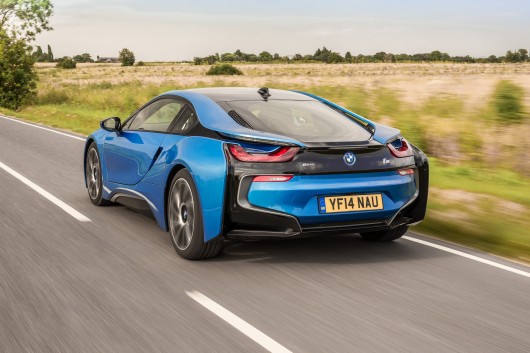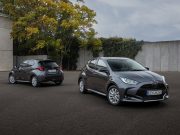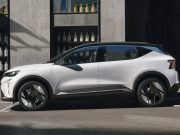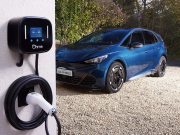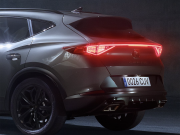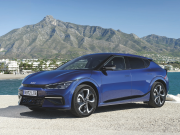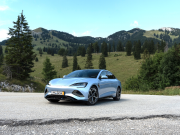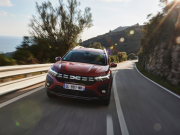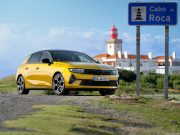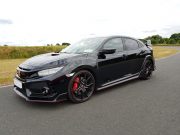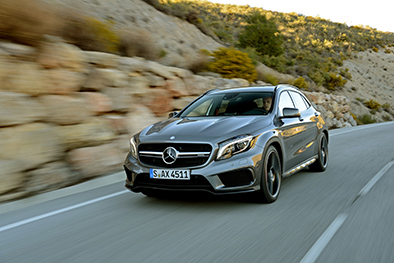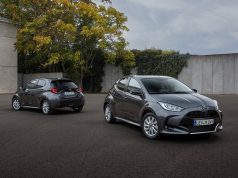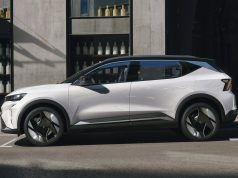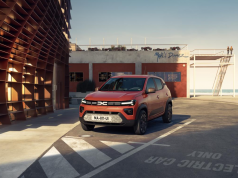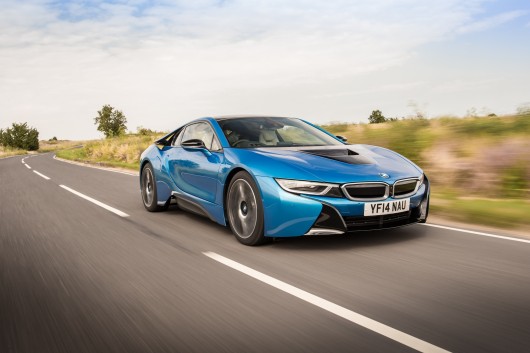
It’s not too often that a car manufacturer will produce a car that closely resembles its concept precursor, frequently only minor details will appear on the road-going model. Thankfully BMW has defied convention, their all-new i8 stays true to their vision concept, first revealed at the Frankfurt Motor Show in 2009. BMW refer to their i8 as ‘the future of the supercar’, it certainly ranks in the supercar category by looks alone. Its lightweight design is made possible through the use of an aluminium chassis with a carbon-fibre-reinforced plastic (CFRP) passenger cell mounted above. The striking i8 attracts attention wherever it travels, its dihedral doors add to the occasion when parked, although it’s a skilled art to climb in and out of the car graciously.
Once inside, front seat passengers are cocooned in luxury with a tasteful combination of leather and exposed CFRP on the sills when the doors are open. The driving position is low, as is the car’s centre of gravity which benefits its handling. There are two diminutive rear seats, with a pocket-sized boot these seats are better put to use as additional luggage space.
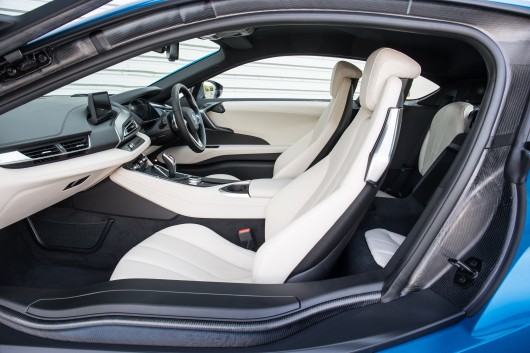
The i8 is powered by a 1.5-litre three-cylinder petrol engine and a 96kw electric motor. The three-cylinder petrol engine has been borrowed from the new MINI Cooper and has the highest displacement per litre of any BMW engine. It’s located in the rear of the car, powering the rear wheels through a six-speed automatic transmission. On its own it produces an impressive 231hp and 320Nm of torque. The electric motor sits at the front of the car and powers the front axle through a two-stage automatic transmission. The combined power output is 362hp and 570Nm of torque, enough to enable the i8 to accelerate to 100km/h from a standstill in just 4.4 seconds. There are three main driving modes that you can select from the toggle switch next to the gear lever, Comfort, Eco Pro and Sport, with a further two e-Drive modes available in Comfort and Eco Pro mode. The car automatically selects Comfort mode on start-up, herby offering the optimum balance between efficiency and performance. The car will run on electric power up to approximately 75km/h before the petrol engine kicks in. When the engine starts up it’s a very linear process with no drama or delay felt, comfort mode would be our recommended choice for the majority of drives. Eco Pro is configured to optimise the electric range of the car, it runs the air conditioning and heating at a minimum to reduce power consumption. We would only really select this if you were low on fuel and want to maximise your range. Sport mode is selected by moving the gear lever away from you, in doing so your aural senses are treated in an instance to quite literally the best-sounding three-cylinder engine you will ever hear. It’s more akin to a growling V6 then a diminutive 1,500cc engine. In sport mode the dials on the digital driver’s instrument cluster change to a more traditional speedometer and rev counter with a glowing red background. You can select gears manually via the gear selector or use the paddles behind the steering wheel. eDrive mode runs the i8 on pure electric power, it can drive at speeds up to 120km/h with an approximate 37 kilometre range.
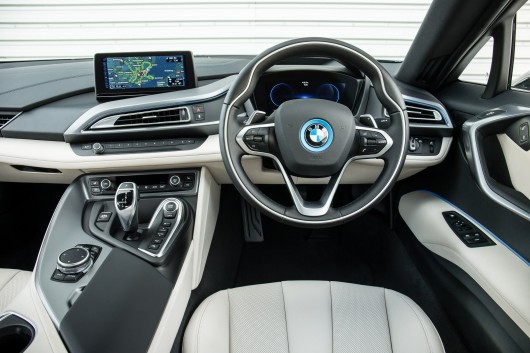
The i8 is a finely honed piece of engineering, having an electric motor driving one axle and a petrol engine driving the other looks intriguing on paper as to how they can work in harmony to provide a true sports car driving experience. Thankfully BMW has managed this, the i8 is an exciting car to drive, around town it’s as docile as an i3 and easy to manoeuvre with good visibility all-round. It’s at its best on the open road in Sport mode, the mid-range power delivery is astounding with acceleration to challenge many high-end sports cars, thanks to its near-instant torque release. The ride is firm in Sport mode but not uncomfortable, the electric power steering however lacks some feel at higher speeds. There is a reassuring amount of grip through corners, if pushed the i8 induces slight under steer although with no hidden surprises. When you lift off the accelerator the regenerative braking is felt more so then in comfort mode. All four wheels regenerate power to the battery, unlike the i3 that solely uses its front wheels.
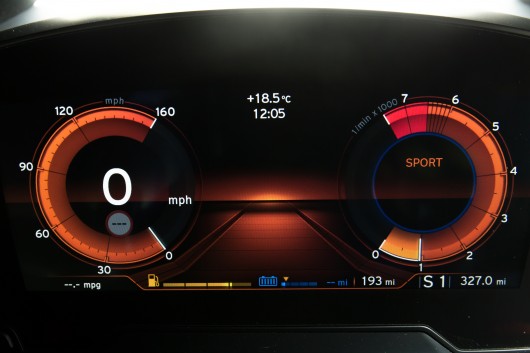
BMW refer to the i8 as the future of the supercar, a bold statement. Nonetheless if this is the direction all sports cars have to take in the future, it won’t be a dull motoring world that’s for sure.
